Abstract
Glutamate catabolism and the factors contributing to metabolic stability of purified suspensions of Rickettsia rickettsi were investigated. By use of 14C-glutamate, it was shown that CO2 was produced from all carbons of glutamate and that 14CO2 production was reduced by the addition of most of the unlabeled intermediates of the citric acid cycle and pyruvate. Oxalacetate, added in various concentrations, did not stimulate glutamate utilization. When the cells were suspended in bovine plasma albumin (BPA), CO2 production from glutamate proceeded at a nearly uniform rate for 8 hr at 32 C and for 24 hr at 15 C. When BPA was used, the cells retained their metabolic activity at 0 or 30 C regardless of cell concentration, and were not influenced by the addition of varoius metabolites. Without BPA, metabolic stability was directly related to concentration. Of the stabilizers tested on low concentrations of rickettsiae, reduced glutathione was the most effective, provided that the gas phase contained predominantly N2. Under these conditions of low partial pressure of O2, glutamate further stabilized metabolic activity and was actively metabolized. The cells were also stabilized by oxidized glutathione in a gas phase of air, but under these conditions glutamate was utilized at a more moderate rate and it impaired metabolic stability.
Full text
PDF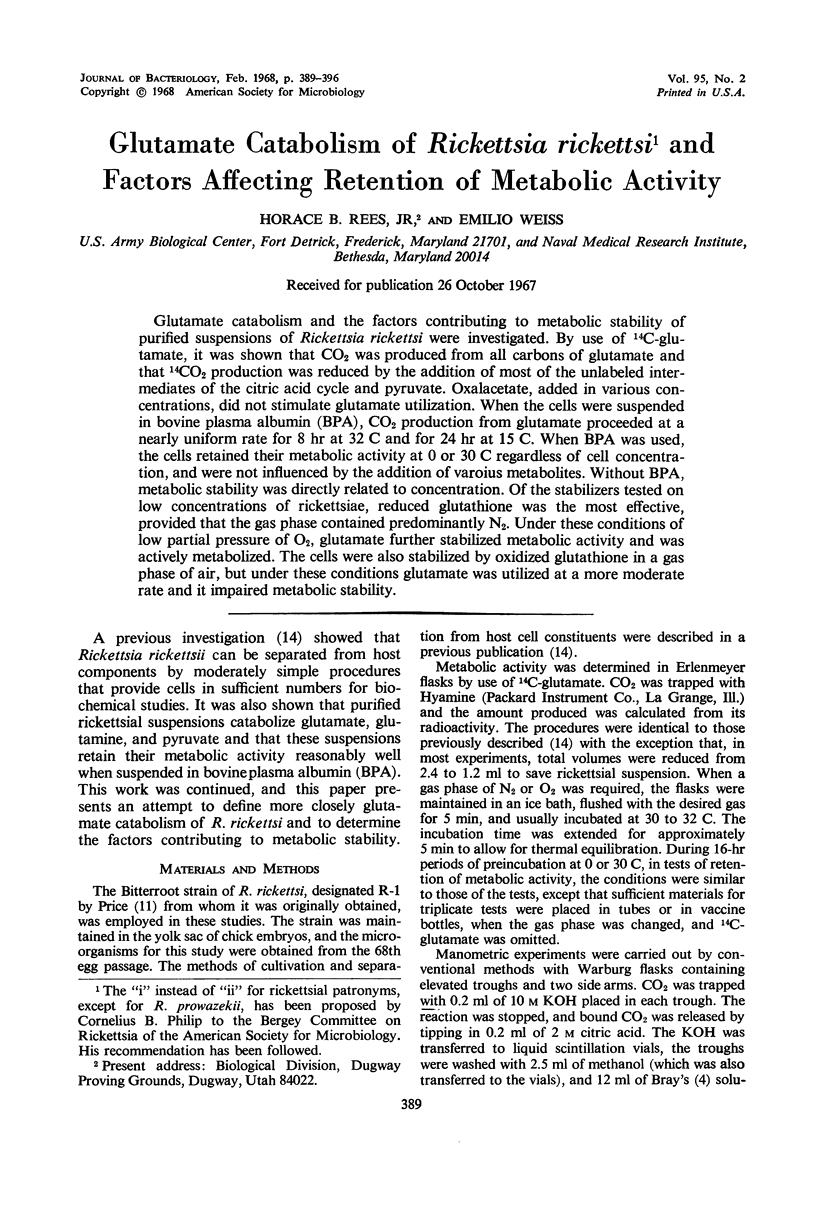
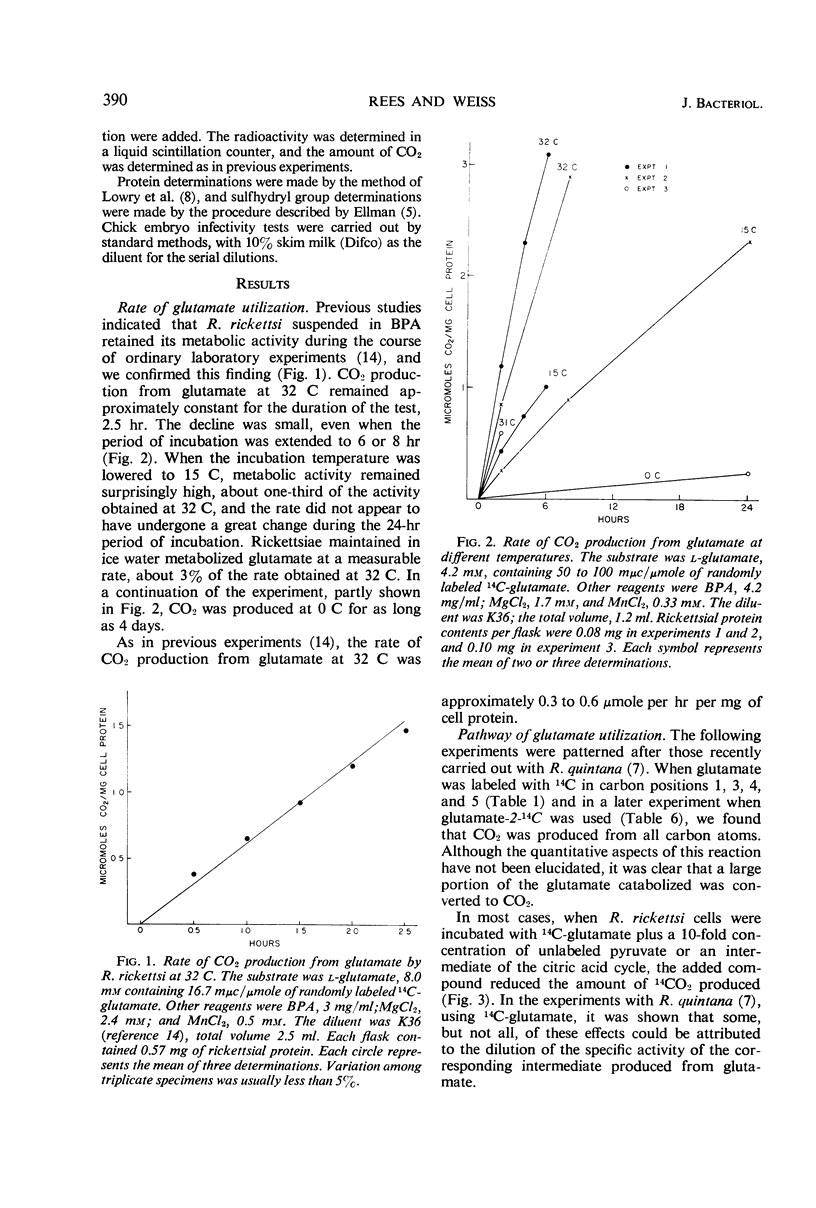
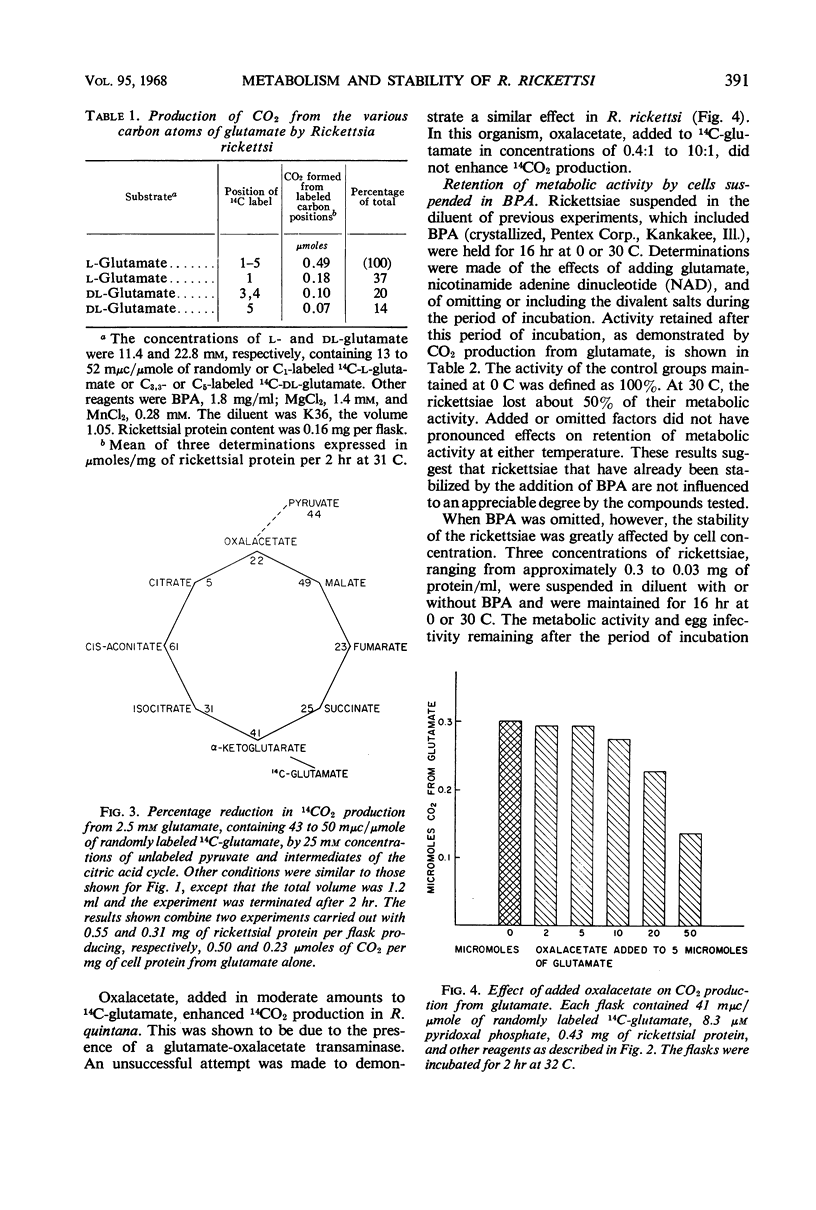
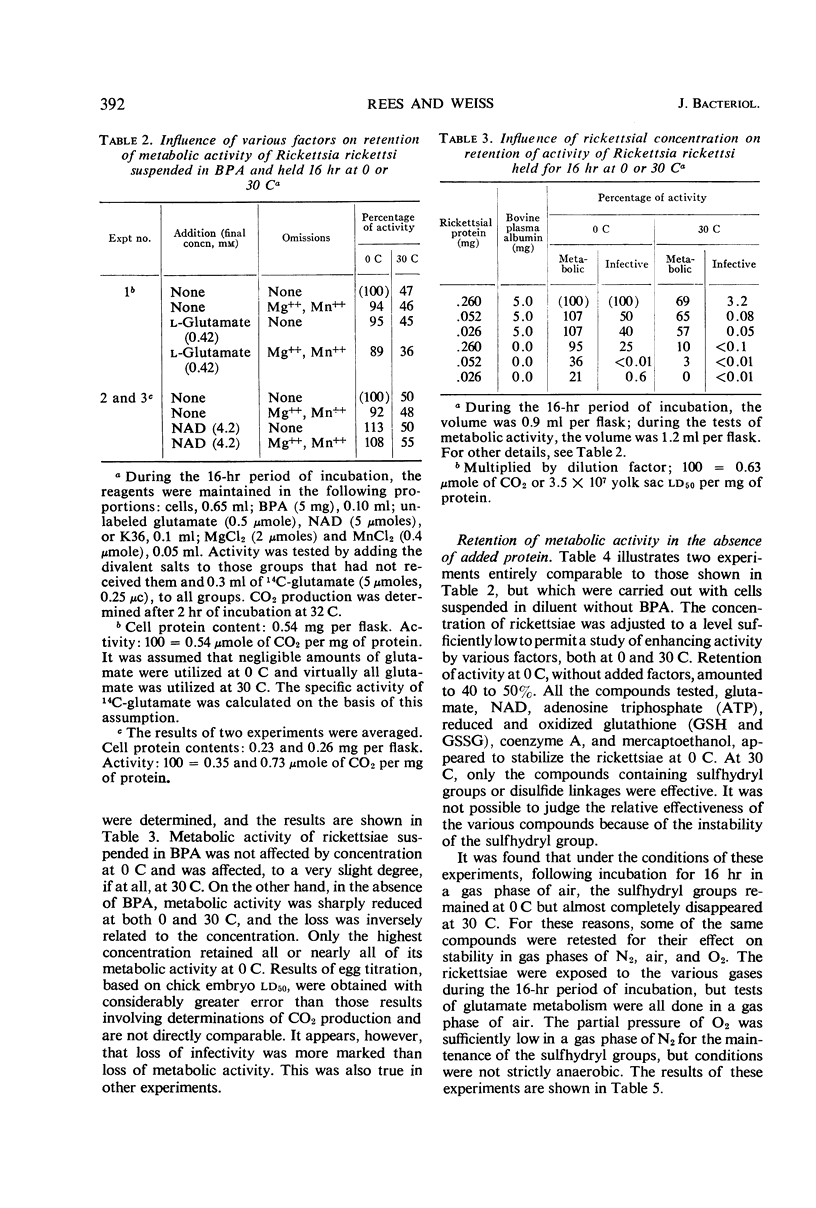
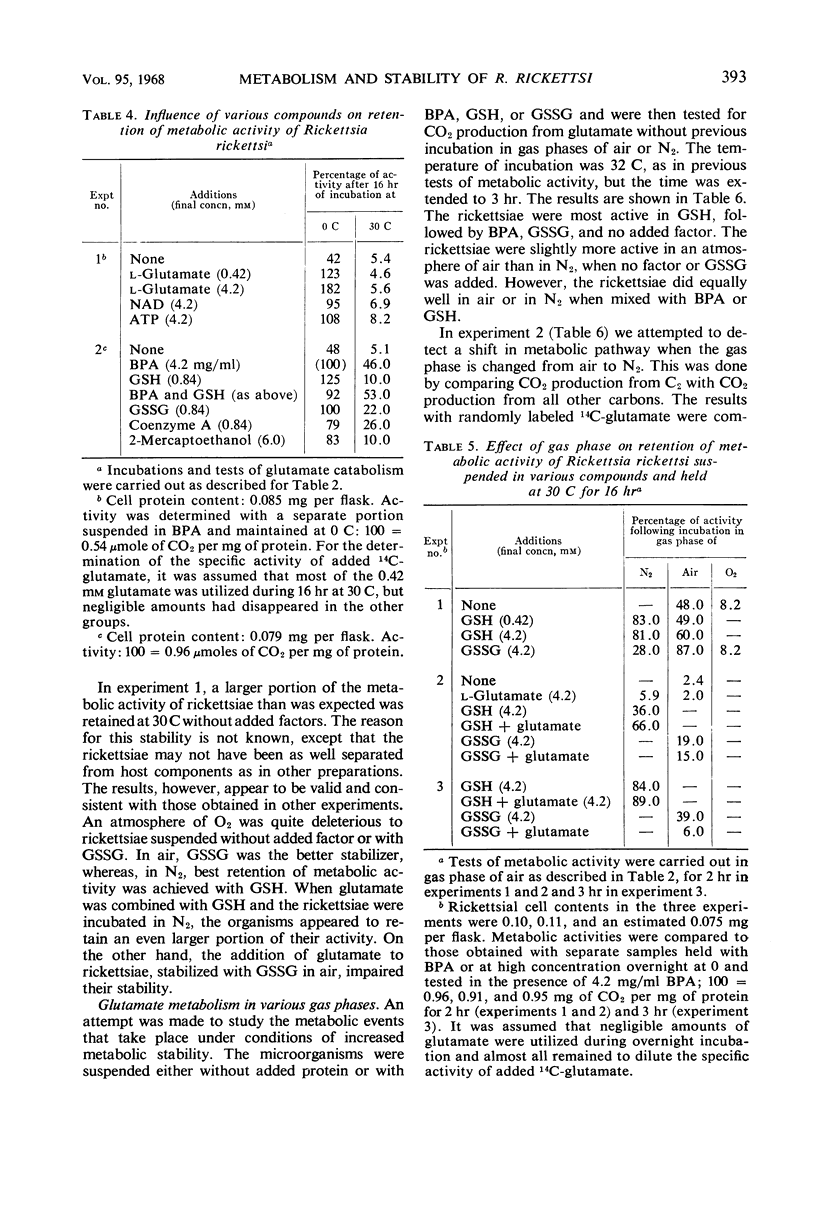
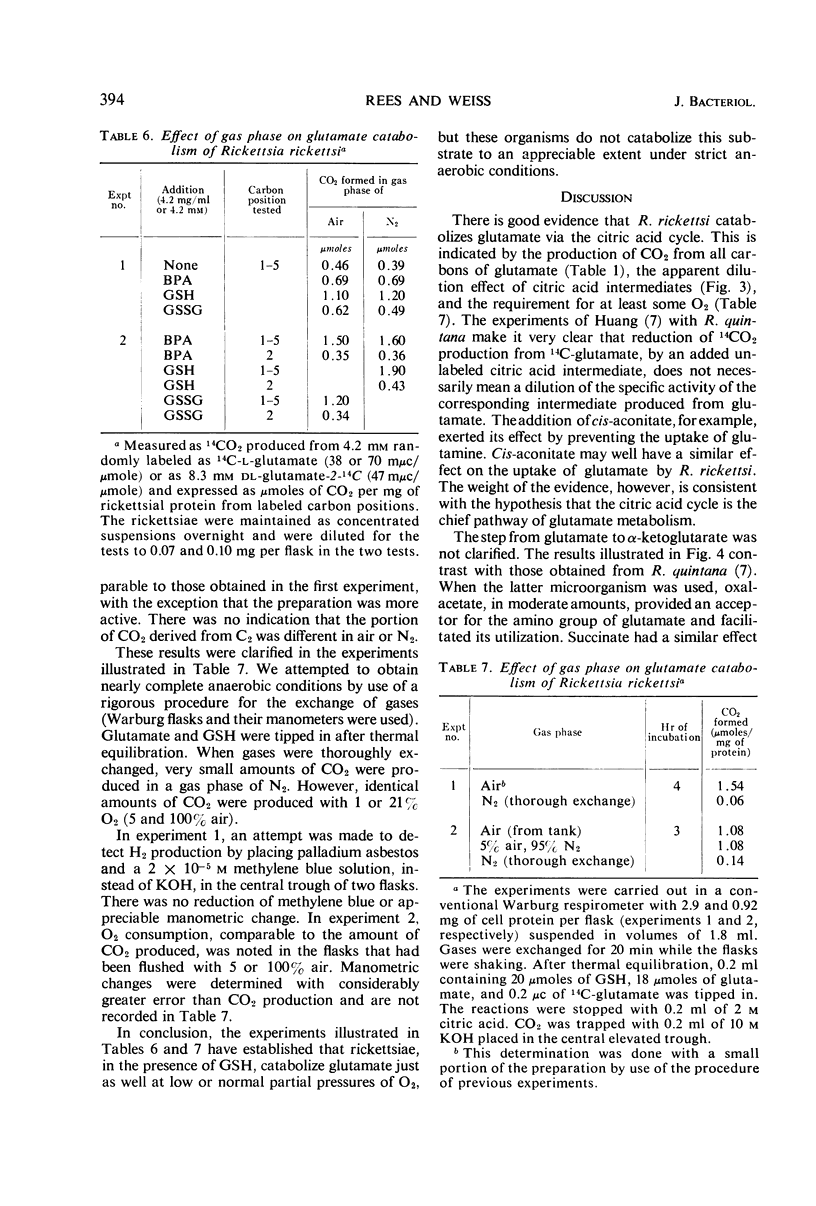
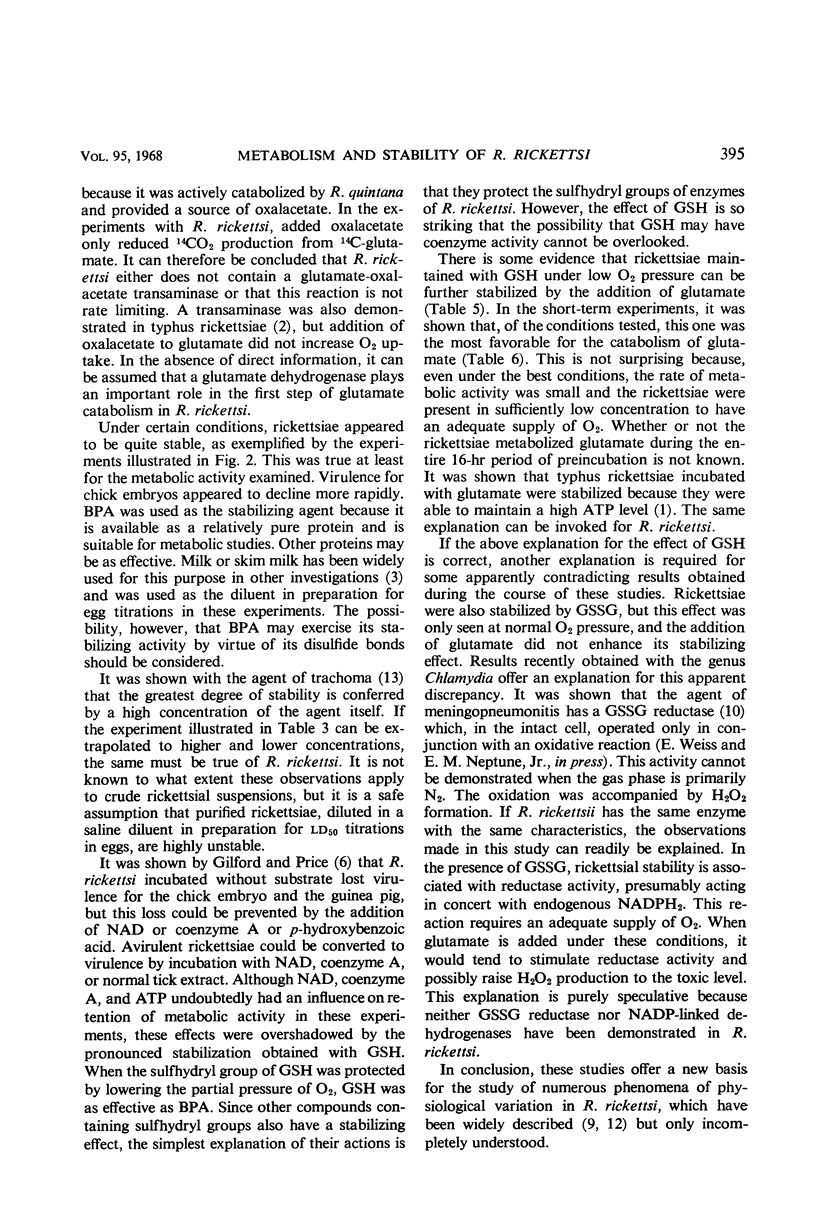
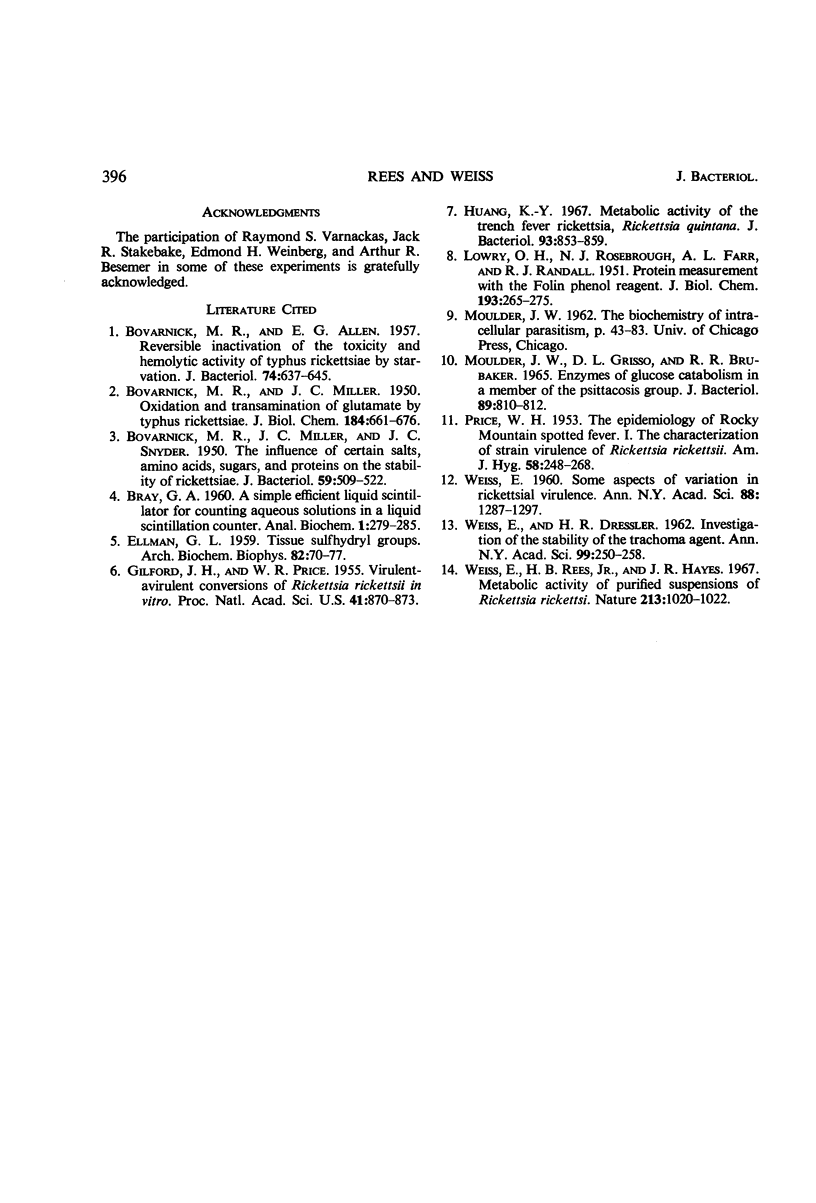
Selected References
These references are in PubMed. This may not be the complete list of references from this article.
- BOVARNICK M. R., ALLEN E. G. Reversible inactivation of the toxicity and hemolytic activity of typhus rickettsiae by starvation. J Bacteriol. 1957 Nov;74(5):637–645. doi: 10.1128/jb.74.5.637-645.1957. [DOI] [PMC free article] [PubMed] [Google Scholar]
- BOVARNICK M. R., MILLER J. C. Oxidation and transamination of glutamate by typhus rickettsiae. J Biol Chem. 1950 Jun;184(2):661–676. [PubMed] [Google Scholar]
- BOVARNICK M. R., MILLER J. C., SNYDER J. C. The influence of certain salts, amino acids, sugars, and proteins on the stability of rickettsiae. J Bacteriol. 1950 Apr;59(4):509–522. doi: 10.1128/jb.59.4.509-522.1950. [DOI] [PMC free article] [PubMed] [Google Scholar]
- ELLMAN G. L. Tissue sulfhydryl groups. Arch Biochem Biophys. 1959 May;82(1):70–77. doi: 10.1016/0003-9861(59)90090-6. [DOI] [PubMed] [Google Scholar]
- Gilford J. H., Price W. H. VIRULENT-AVIRULENT CONVERSIONS OF Rickettsia Rickettsii IN VITRO. Proc Natl Acad Sci U S A. 1955 Nov 15;41(11):870–873. doi: 10.1073/pnas.41.11.870. [DOI] [PMC free article] [PubMed] [Google Scholar]
- Goodwin C. S., Tyrrell D. A., Head B., Rees R. J. Inhibition of haemaggregation by lepromin and other mycobacterial substances. Nature. 1967 Dec 9;216(5119):1019–1020. doi: 10.1038/2161019a0. [DOI] [PubMed] [Google Scholar]
- Huang K. Y. Metabolic Activity of the Trench Fever Rickettsia, Rickettsia quintana. J Bacteriol. 1967 Mar;93(3):853–859. doi: 10.1128/jb.93.3.853-859.1967. [DOI] [PMC free article] [PubMed] [Google Scholar]
- LOWRY O. H., ROSEBROUGH N. J., FARR A. L., RANDALL R. J. Protein measurement with the Folin phenol reagent. J Biol Chem. 1951 Nov;193(1):265–275. [PubMed] [Google Scholar]
- MOULDER J. W., GRISSO D. L., BRUBAKER R. R. ENZYMES OF GLUCOSE CATABOLISM IN A MEMBER OF THE PSITTACOSIS GROUP. J Bacteriol. 1965 Mar;89:810–812. doi: 10.1128/jb.89.3.810-812.1965. [DOI] [PMC free article] [PubMed] [Google Scholar]
- PRICE W. H. The epidemiology of Rocky Mountain spotted fever. I. The characterization of strain virulence of Rickettsia rickettsii. Am J Hyg. 1953 Sep;58(2):248–268. doi: 10.1093/oxfordjournals.aje.a119604. [DOI] [PubMed] [Google Scholar]
- WEISS E., DRESSLER H. R. Investigation of the stability of the trachoma agent. Ann N Y Acad Sci. 1962 Mar 5;98:250–260. doi: 10.1111/j.1749-6632.1962.tb30549.x. [DOI] [PubMed] [Google Scholar]
- WEISS E. Some aspects of variation in rickettsial virulence. Ann N Y Acad Sci. 1960 Nov 21;88:1287–1297. doi: 10.1111/j.1749-6632.1960.tb20120.x. [DOI] [PubMed] [Google Scholar]


